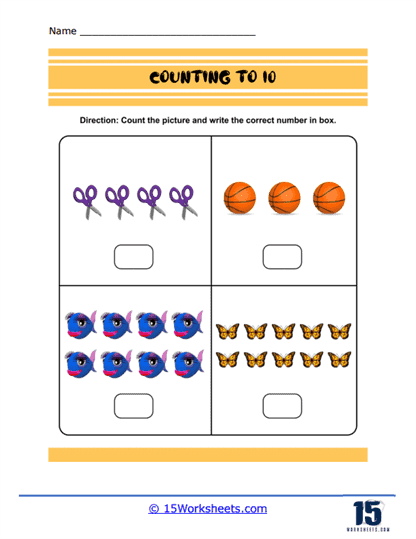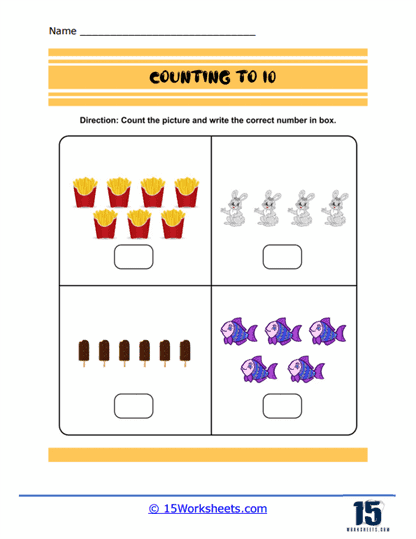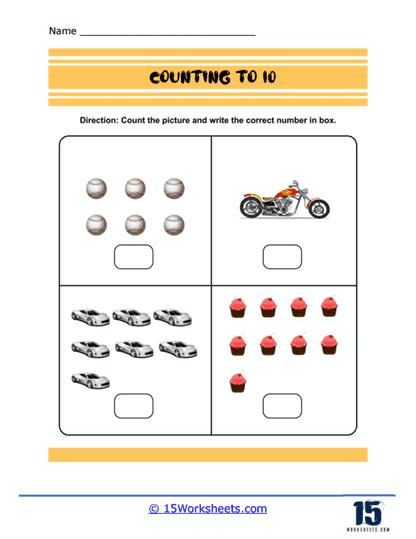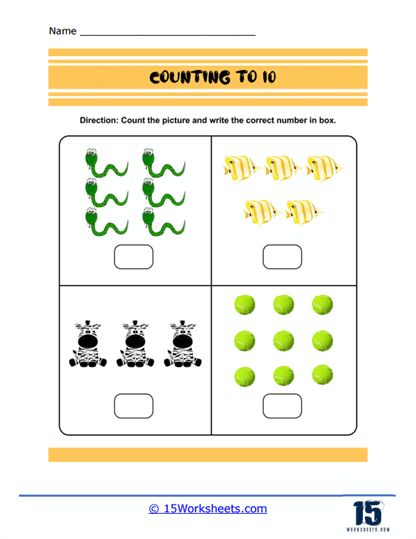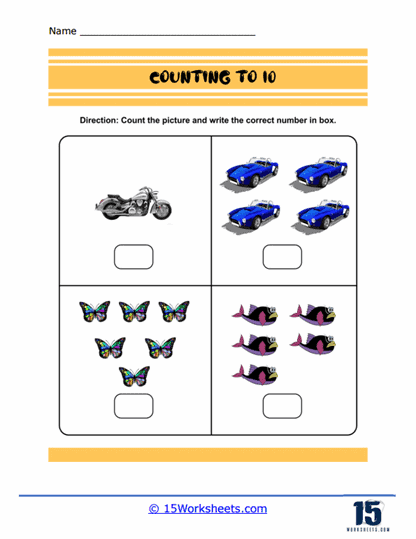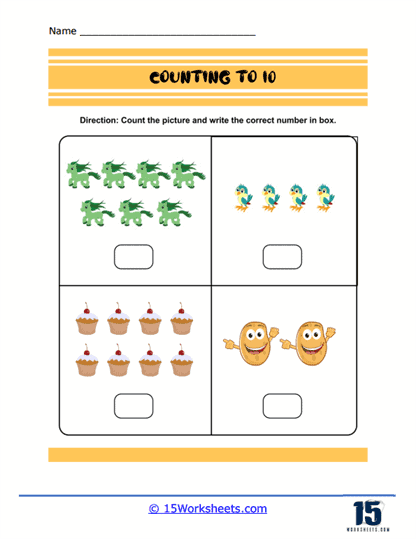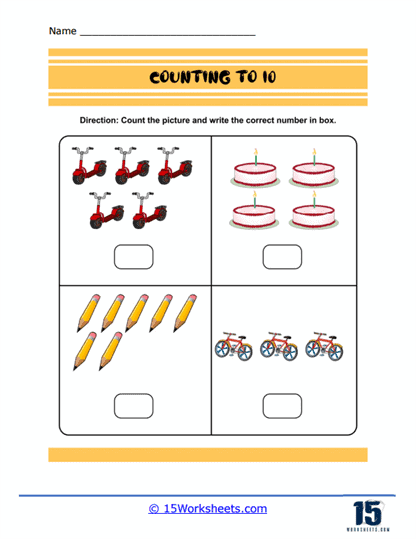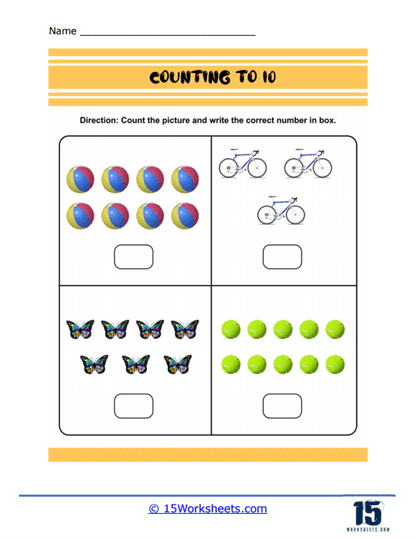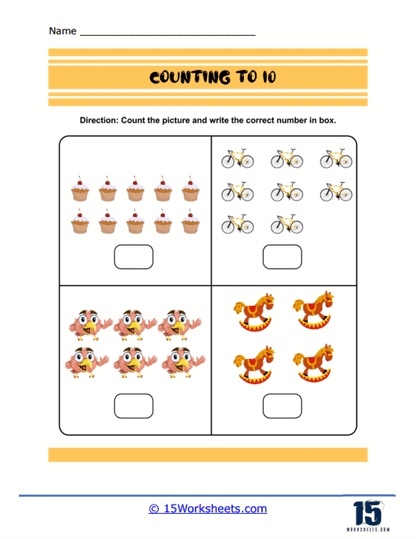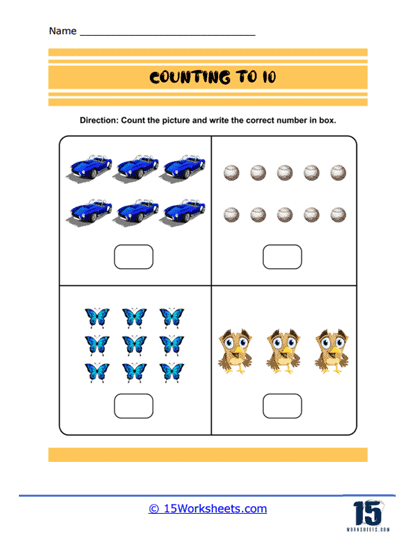Counting to 10 Worksheets
What Are Counting to 10 Worksheets?
These worksheets will help students learn to count and recognize numbers from 1 to 10. They feature a series of numbers or objects, and children are asked to count them and write the corresponding number.
Counting to 10 worksheets can come in many different forms, such as fill-in-the-blank exercises, matching games, and puzzles. Some worksheets might ask children to count the number of objects in a picture and write the corresponding number, while others might ask them to fill in the missing numbers in a series of numbers counting up to 10.
Counting to 10 helps children develop number recognition skills. By counting regularly, they become familiar with the appearance and order of numbers, which is essential for further mathematical understanding. It also serves as a foundation for basic arithmetic operations such as addition and subtraction. It allows children to understand and perform simple calculations, laying the groundwork for more complex mathematical concepts later on.
Students will learn that the number 1 to 10 represents a certain amount or quantity of objects, and they can apply this understanding to various real-life situations involving counting and comparing quantities. They learn that each object is associated with a single number, and this understanding forms the basis for more advanced mathematical skills such as skip counting and multiplication.
How to Teach Students to Count to 10
Teaching students to count to 10 is a fundamental skill that lays the foundation for more advanced mathematical concepts. Here are some strategies to effectively teach students to count to 10:
Introduce Numbers and Counting – Start by introducing the concept of numbers and counting. Use visual aids such as flashcards or posters to show the numbers from 1 to 10. You can also use physical objects to represent the numbers, like blocks or beads.
Teach Number Names and Sequence – Teach students the names of the numbers from 1 to 10 and the correct sequence for counting. Encourage them to practice counting aloud and memorizing the correct order of the numbers.
Use Songs and Rhymes – Use songs, rhymes, or chants to make learning fun and engaging. Many popular nursery rhymes and songs incorporate counting, which can help students learn to count to 10 in a fun and memorable way.
Use Manipulatives and Visual Aids – Provide students with manipulatives like counting bears, blocks, or beads to help them visualize the numbers and understand the concept of counting. Arrange the manipulatives in different patterns or groupings to show students how the numbers relate to each other.
Incorporate Counting into Everyday Activities – Encourage students to practice counting during daily routines or activities, such as counting steps while walking, counting objects in the classroom, or counting pieces of fruit during snack time.
Teach One-to-one Correspondence – Help students understand the concept of one-to-one correspondence, which means associating one object with one number as they count. Use manipulatives or other physical objects to practice this skill.
Play Counting Games – Play games that involve counting, such as “Hide and Seek” or simple board games that require counting spaces. These games can help reinforce counting skills and make learning more enjoyable.
Use Worksheets and Written Activities – Provide students with worksheets and written activities that require them to practice counting, tracing, and writing numbers from 1 to 10. This will help reinforce their understanding of the number sequence and develop their fine motor skills.
Encourage Practice and Repetition – Like any new skill, practice and repetition are key to learning to count to 10. Encourage students to practice counting regularly and offer praise and support to build their confidence.
Be Patient and Supportive – Learning to count can be challenging for some students, so be patient and provide support and encouragement. Break down tasks into smaller steps and offer praise for progress and achievements.

